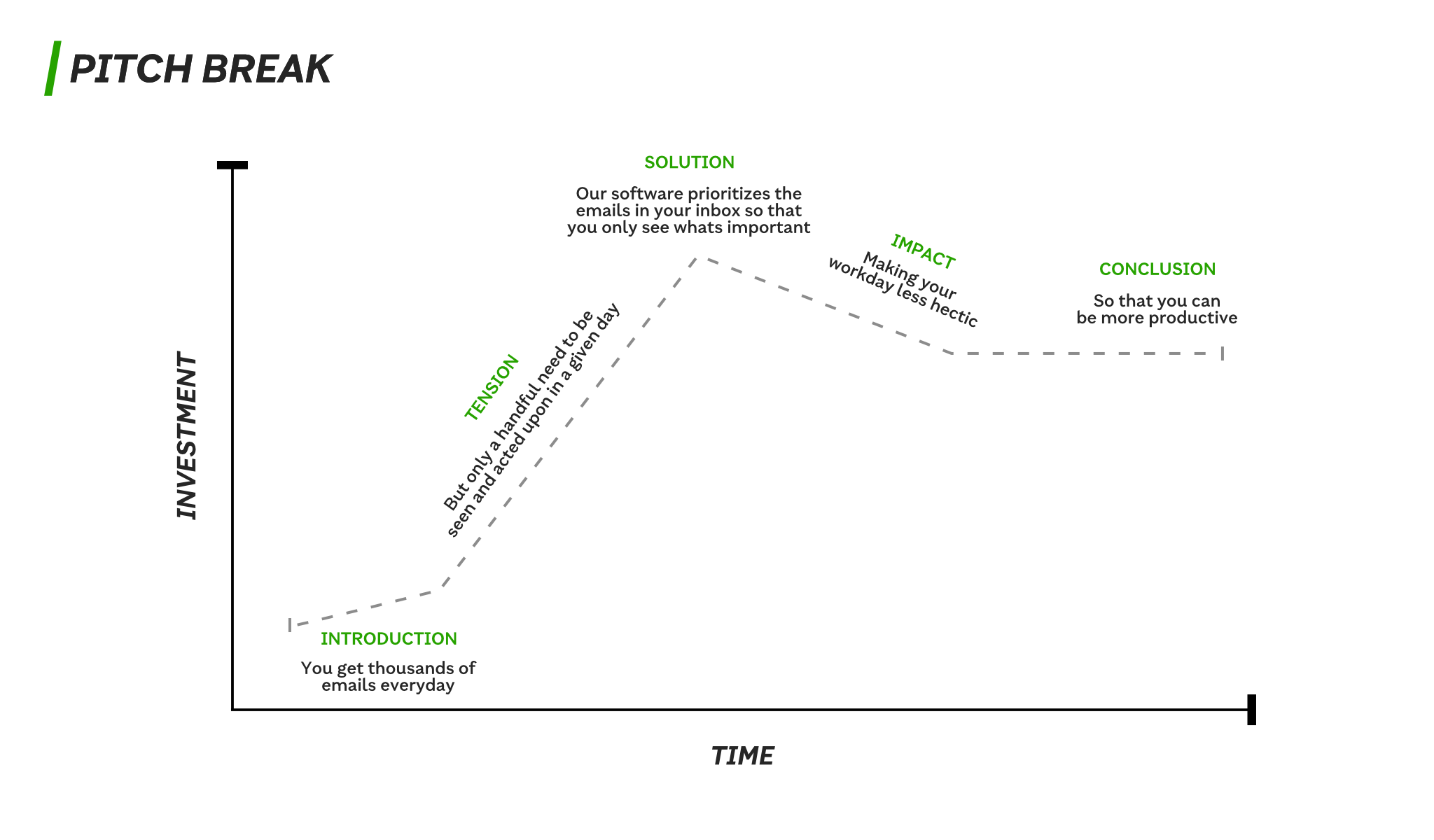Qualities of a Great Story: Why a Narrative Arc is Key to Winning Over Investors
Practical Pitching Part 1: Your narrative tells your story.

Hello and welcome! This first post will also be the first installment of a 10-part series on Practical Pitching — a guide to help first-time founders develop their pitch.
A few weeks ago, I joined a workshop hosted by Section4 about Compelling Presentations.
Marcus Collins (MarcToTheC), the brand marketer and professor, hosted folks worldwide to discuss narrative arcs and their importance in presentations. While listening to the presentation, it struck me that many founders I’ve worked with will slap together a slide deck in PowerPoint and start pitching. While I commend bias towards action, too many green founders get trampled in their first pitches.
The narrative about why you, why now, and why this company is often overlooked.
The Narrative (Arc)
Facts and figures get forgotten. Stories get remembered.
Before charting out your deck, start with the narrative around the pitch. Marcus gave a great example of an external sales presentation for an application that prioritizes emails in an inbox. For any narrative, there were five distinct qualities he used:
- Introduction: Setting the Scene
- Build Up: The Tension
- Solution: What It Does
- Impact: Real-World Value
- Conclusion: The Outcome
These five qualities were then laid out as a chart of investment vs. time:

Introduction: Setting the Scene
Your introduction sets the scene for the story you will tell throughout the pitch.
It has to be concise, relatable, and convey the status quo. In his example, Marcus used the line:
You get thousands of emails every day.
This creates a simple and relatable path to the conflict that needs to be resolved.
Build Up: The Tension
The tension you create in the story is the next piece to reveal the path to something better than the status quo.
Tension in the story opens the audience's mind to change a behavior or mindset. This tension creates a memorable message that's easy to digest, refer back to, and communicate to others. The feeling you create between the status quo and tension leaves room for a solution — a vision for a better tomorrow.
Remember the chart from earlier? You'll notice this is the longest single portion of the narrative, so make it count.
Solution: What It Does
Think of this as the hook for your elevator pitch or a description of what your product/service does. The example Marcus uses:
Our software prioritizes the emails in your inbox so that you only see what's important.
The meat of the solution should play off what is and what could be — leading to the impact for users.
Impact: Real-World Value
The impact is what you are bottling up and selling to customers. It's a direct effect of adopting the solution and deploying it.
Arguably, the impact is the most important section of the narrative. This is the confluence of broader viewpoints on the addressable market, product-market fit, and customer segment, which makes investors want to invest (and make a return).
The real-world value you provide is the driver for everything your business does, your mission to upend the status quo, and your vision for a better tomorrow.
Conclusion: The Outcome
When you hear 'outcome' and 'impact', you might think they are interchangeable. But they aren't.
The outcome is the measurable and specific short-term effects for users. For Marcus, this is:
So that you can be more productive.
It might not sound measurable, but the service provides a measurable outcome by prioritizing the inbox with the most important information. Leaving everything else behind. Examples of this can be found in productivity apps or products like Google Calendar through insights:
You spend 15 hours in meetings this week. Try scheduling weekly focus time on days with fewest meetings: Tuesdays.
Test, Feedback, and Refine
Once you develop your narrative arc, your aim should be to test it, get feedback as quickly as possible, and refine your message. Don't worry if you fumble on the first try. There's always another pitch around the corner to test out your story.
I'll leave you with some relevant links, publications, and resources for further reading. Pitch Break is not affiliated with any of these links/publications.

